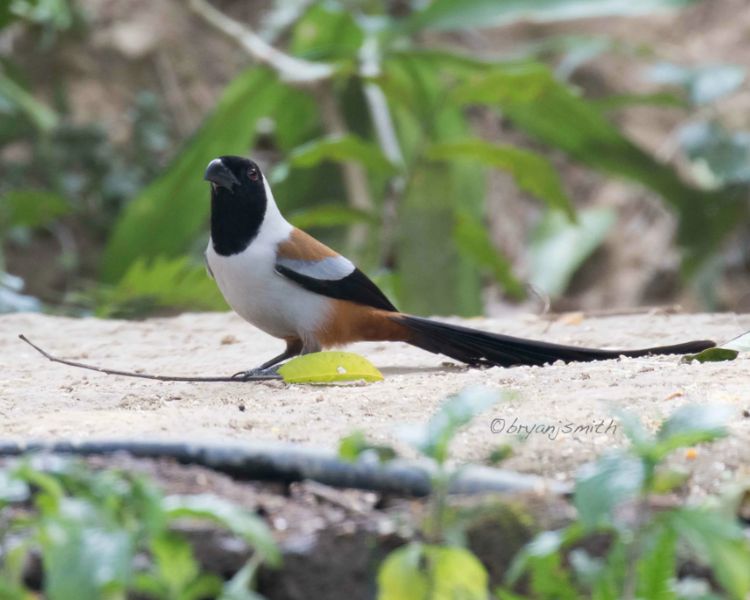

n the verdant heart of the Indian subcontinent, a remarkable avian species graces the treetops with its exquisite presence. The White-bellied Treepie, scientifically known as Dendrocitta leucogastra, is a bird of captivating beauty and fascinating characteristics that leave a lasting impression on all who encounter it.
The White-bellied Treepie is a medium-sized bird, measuring approximately 38-43 centimeters in length, boasting a mesmerizing blend of colors that mirror the lush forests it calls home. Its plumage is a symphony of contrasts, with its upperparts adorned in deep, glossy black, forming a striking backdrop for the pristine white belly that gives it its name.
One cannot help but be entranced by the White-bellied Treepie’s exquisite facial features. Its jet-black eyes are striking against its snow-white face, a stark contrast that seems to hint at the bird’s deep, enigmatic personality. Its long, elegant tail feathers add to its overall grace and agility, making it a marvel to behold in flight.


Beyond its physical beauty, the White-bellied Treepie exhibits a plethora of behaviors that make it a captivating subject of study. These birds are highly social, often seen in small groups or pairs, their melodious calls echoing through the forest like a sweet serenade. Their vocalizations, a delightful mix of whistles, chatters, and trills, contribute to the enchanting ambiance of their woodland habitat.


Known for their intelligence and inquisitiveness, White-bellied Treepies are adept foragers. They deftly navigate the forest canopy, extracting insects from tree bark and even indulging in occasional fruit feasts. Their nimble abilities and quick thinking are a testament to their adaptability in their dynamic environment.
One of the most endearing traits of these treepies is their unwavering loyalty to their family units. They form tight-knit bonds with their mates and offspring, showcasing their nurturing side as they share food and engage in mutual grooming sessions.


Observing these remarkable birds in their natural habitat is a privilege that grants us a window into the intricate tapestry of the forest ecosystem. White-bellied Treepies play a vital role in maintaining the balance of their environment as both seed dispersers and insect predators.
In conclusion, the White-bellied Treepie stands as a symbol of the incredible diversity and beauty of our natural world. Its elegance, charming vocals, and complex behaviors make it a true wonder of the avian kingdom. As we strive to protect our planet’s biodiversity, let us celebrate and safeguard these extraordinary creatures that enrich our connection to the natural world.




